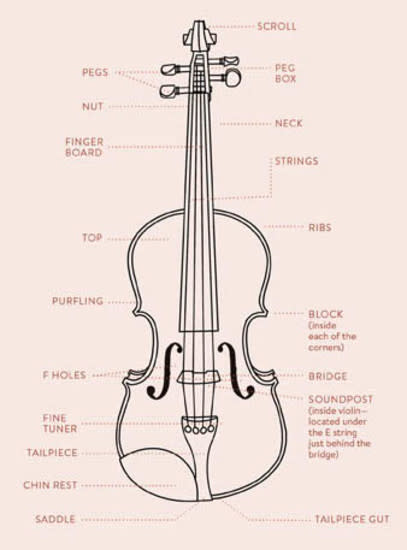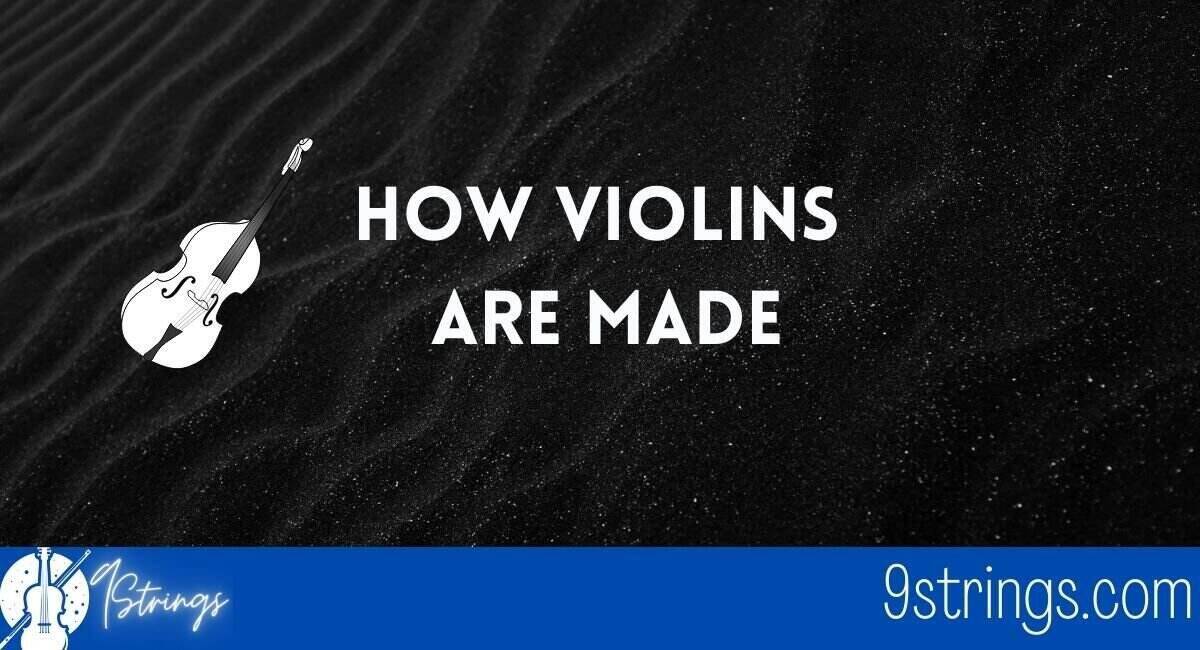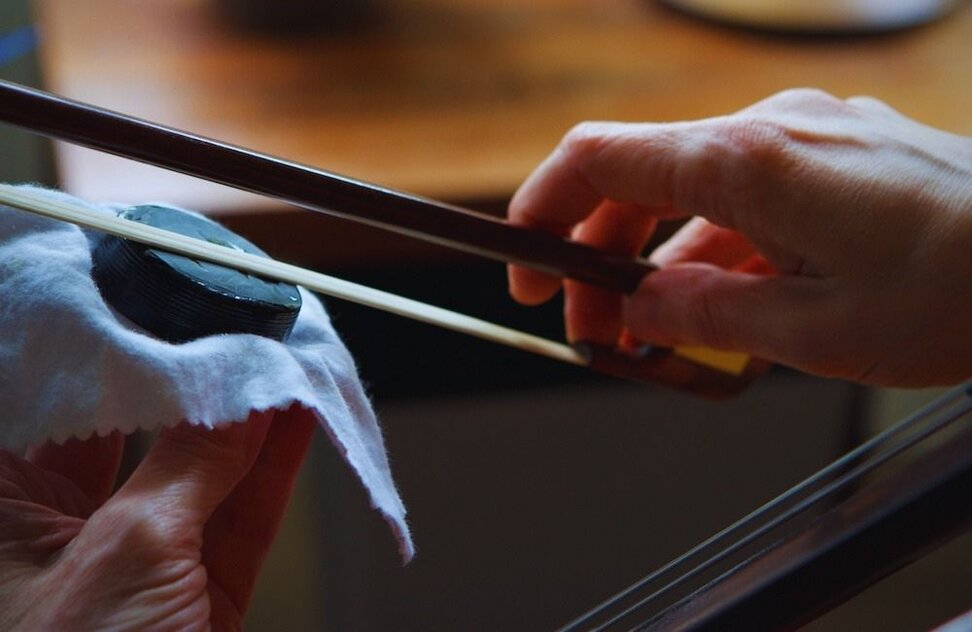Violinists have a lot of choices when it comes to selecting the perfect violin, bow, and strings. There are many factors that contribute to choosing the best instrument for you. From your budget, preferred style of music, volume level desired during practice/performance, weight of the instrument and more – so how do you know which one is right?
In this article we will help you choose what instrument and accessories are best for your needs.
How to choose a Violin?
You can’t just go to the store and buy a violin, you need to know what your needs are and what factors matter most.
A lot of people think that all violins sound the same but this is not true. Choosing an instrument will depend on your personal preferences from size, shape, weight and tone color.
Whether you are a beginner violin player or trying to upgrade your instrument after playing for a long time, selecting a perfect violin is always an expensive as well as a critical investment. That’s why, before purchasing your violin try to follow some basic instructions that may guide you to avail the best possible violin for you.
Learn about the basic parts of a violin
Before buying your violin, you should know details about the basic constructions of a violin.
This knowledge will help you to be familiar with the basic parts of a violin. You will be able to check whether it matches your requirements or not.
For example, the tuning pegs are one of the most important parts of a violin. These must operate smoothly and need to turn in easily while playing. If you are buying a violin for your kids and the tuning pegs are not comfortable, it will lead to an out-of-tune string. Your kids may feel discomfort with the constant need to tune their instruments.
As ebony fittings are hard-wearing, these are recommended by experts. Similarly, you need to be aware of the fittings of the bridge and fingerboard. The strings should be a reasonable height from the fingerboard to perform the best.
The bridge should be erect closely to the body of a violin. Thus, every part of a violin performs an important role to generate a high-quality tone. If you are not knowledgeable enough, you will not be able to verify the competence of any violin.
Therefore, before choosing any instrument better to gather all the available information around you. All this expert information will enlighten you and you will find the right violin for you.

Check the construction of a violin
The good construction is a prime sign of a high-quality instrument.
If you are buying a second-hand or used violin always check it for any cracks or wrapping on the body. A well-constructed violin will serve you for years.
But a poorly constructed violin will not last for long. The violin with an inherent fault will be difficult to play for any violin player.
If you buy a poor-quality instrument at a cheaper price then you have to purchase another soon as it will not last long. So, it’s better to purchase the best quality instrument that helps you to win in the long run.
Always check all the available features and specifications that match your exact requirements. The well-constructed body and correctly positioned parts need to be verified before purchasing any new instruments. Must check the construction of other accessories provided with your violin.
Select the size that is suitable for you
All the violins are not suitable for anyone. A violin for an adult may not fit on a child’s arm.
Similarly, a small size violin will not be suitable for an adult. So, the size of a violin is an important factor to consider while choosing your violin.
A one-size-fits-all policy will not be applicable when it’s a matter of purchasing violins. Different sizes of violins are available in the market.
The full size or 4/4 violins are usually used by mature players after the age of 11. But it is better to choose your violin according to your arm’s size.
Try to check your comfortability before purchasing your violin. Because your level of comfortability is the best indicator to find the correct size violin for you.
The smallest size violins are usually known as 1/4 which are suitable for kids. However, the 1/8 size violins are also perfect for kids.
The perfect size of violin for any player can be measured with a tape measure. If a violin player’s arm is 16 inches then he or she may need a 1/4 size violin. Similarly, a person with a 23 inches arm may require a full-size violin.
Nowadays you have many options to purchase your desired violins. The instrument rental process can be another convenient process for any student or learner. When you are learning violin, you might not be sure which violin is the best suit for you. You can overcome this critical situation by renting a violin for a time being.
Furthermore, it is a good way to upgrade your violin sizes. It will save you a significant amount of money for buying a series of violins in different sizes. However, always try to buy violins from an experienced seller where you can receive perfect guidance and correct advice for purchasing as well as maintaining your instruments.
How to choose a bow?
If you are trying to find a violin for the very first time you might need to know which one is the right bow for you. Because selecting the right bow is a daunting task.
Choosing a violin bow is one of the most important decisions in your career as a violinist. A good bow will inspire you and can make all the difference between an average performance and an excellent performance.
– Paul Harman
I have compiled this guide to help you find the best possible bow for yourself, taking into consideration things like price range, weight, stick material, hair quality, balance point etc.
Here are some tips for you.
Check the smoothness
The best quality bow must have some specific qualities. First of all, it should smooth while you are performing. The smoothness of a bow is the most important quality to check. A good quality bow will never bother you while playing violin. It should become an extension of your right hand so that you can play the violin with minimum effort.
A well-made bow has the power to perform better. It will increase your level of confidence to play your violin better.
However, to get the maximum output from a good-quality bow you need to understand the bowing technique. Otherwise. you will fail to perform better even with a well-constructed bow.
Understand the bow materials
Prior to selecting your bow, you need to understand all the things related to the bow like its material, shape, sound production process.
Mainly three types of materials are used in bow sticks. These are brazilwood, Pernambuco, and carbon fiber.
Brazilwood indicates all types of tropical hardwood that can be used to prepare inexpensive bows. As it mainly comes from Brazil and other tropical countries.
The bows made from these types of woods are usually available in a comparatively lower price range and suitable for the early and intermediate players.
Pernambuco woods are used to make the best quality bows. This heavy wood is mainly grown in several areas of Brazil. As this type of wood has the perfect combination of dense, responsiveness, and elasticity, these are very good for making violin bow.
However, due to environmental degradation, the government of Brazil has restricted the export of this wood. So, now bow with this type of wood has become rare and expensive.
Due to the shortage of Pernambuco wood, carbon-fiber bows are getting popular for the last 20 years. It is manufactured from various grades of carbon fiber. It is very durable and affordable for violin players. Nowadays many bows are found with fiberglass with low-prices student instruments.

Check the sound that the bow produces
Different bows can produce different sounds on their instruments. Some bows can create smoother and fuller sounds while others can create less clear sound.
If the bow stick is very soft, it may not be able to produce a clear sound. Similarly, an overly stiff bow may produce a rough and edgy sound.
Moreover, it can produce a sound lack of clarity and definition. So, it is very difficult to find a suitable bow that can produce a smooth sound with great clarity. In this situation, try to find a stronger bow that can ensure the quickness of response with a smooth broad sound.
Consider the weight and balance of the bow
As you have to carry the bow for a long time while playing, you need to be aware of the weight of the bow.
On average a bow is about 60 grams. But it may vary based on the types of manufacturers. A bow over 60 grams may be too heavy for everyone.
So, when selecting your bow, you try to pick a bow that can maintain a good balance with violin string. If possible, test a few bows before purchasing. Your comfortability is the most important factor while choosing a bow. If you feel better with a bow it might be the right choice for you.
Contemplate the shape of a bow
Finally, you need to be aware of the shape of a bow.
The great French master makers usually made round shape bows. Still, now round shape bows are the first choice for many players. Though some octagonal bows are also popular among some players They can create a hard, one-dimensional tone.
However, some octagonal bows are quite expensive. If you don’t know much about bows, try to educate yourself by practicing lots of bows. Whether you are selecting your bow online or from a physical store, use your time efficiently. If possible, try to test them before purchasing them. Everyone has different opinions on a particular bow. But you need to remember that the bow will be yours and you have to take the final decision.
If you are a beginner and have fewer technical skills, try to choose a bow with a reasonably strong stick that has a good amber or curve. As you are going to start your violin learning journey, so you don’t need to select an extra-fine quality and expensive bow.
Try to choose a bow that is not too heavy and can maintain a proper balance. Because a light bow may help you to practice at this initial stage of learning. Gradually, when your skills increase you can identify the differences between good quality and low-quality bow, you will be able to recognize your particular demands for a perfect bow. Then you can choose a good quality expensive bow for the long-time practice.
How to choose a violin string?
A multitude of choices is available while choosing a violin string for you. You can try a simple gut string or may like to have a cavalcade of E strings plated with platinum, gold, or silver. Additionally, you can select an ordinary synthetic string for your inexpensive violin.
However, you may not be able to try all the available strings in the market. But you can make an educated guess when it comes to picking violin strings. To perform this guesswork perfectly, you need to understand the core and winding materials of the strings.
You also need to recognize the string tension that generates a good quality tone while playing. This realization will help you to find the perfect strings for your instrument.
Understand the core metal and gauge of violin string
Every instrument has its properties and nature of sound. Strings are just a part of the whole violin. Just changing to a new form of strings may not make a huge difference in your playing instruments.
So, before changing to a new string or choosing a string for your new violin, it requires some consideration about the core metals of your violin.
A gut core is the original type of strings. These have been used as violin strings for years. Generally, these are made from sheep intestines. These types of strings require more frequent tuning and tend to have a slower response. On the other hand, steel core strings have a quick response that can produce a clear and brilliant tone.
However, you may feel less depth of sound and lack of tonal complexity from these types of strings. The synthetic core is another good option for violin string. This type of string is much more stable and tends to have a more focused tone.
Consider the string tension
String tension is one of the most important factors while choosing violin strings. Because it makes the tonal differences between different types of violins. String tension mainly depends on the string’s gauge or width. Gut string is thicker than other types of string.
If you choose a gut string, it will produce a darker tone with a slower response. A thinner string like steel and synthetic can produce a more responsive tone with lower volume. Most violins are available in different tensions like light, medium, and heavy. Synthetic or steel core strings can generate higher average tension than gut core materials strings. If you are a beginner, you can start with medium-gauge strings and can try different gauge strings to find your desired tone.
No string will last a lifetime. You may have to replace it for the time being. Perhaps you need to change strings every couple of months or may change it once a year. It depends on the techniques you are applying while playing your violin.
Summing-up
Choosing a violin, bow or strings wisely mostly depends on your experience and knowledge about the violin. So, it’s better to get some suggestions and recommendations from experts if you are new or have lower technical knowledge.
Here we tried to help you to choose the right violin, bow, and string. You just need to bear these important points before starting your shopping.
Sources:
- https://www.masterclass.com/articles/what-are-the-different-parts-of-a-violin-and-how-do-they-work#what-are-the-key-features-of-a-violin
- http://www.madehow.com/Volume-2/Violin-Bow.html



